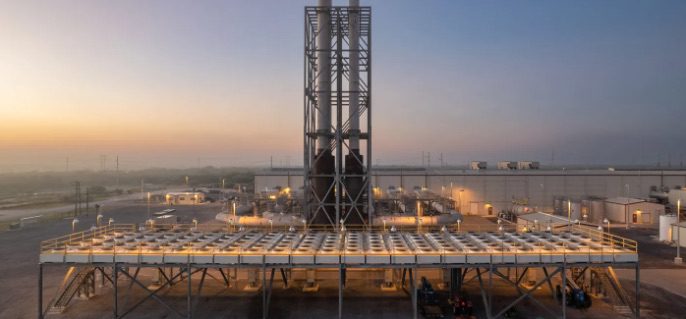28 November 2024
Power-to-X fuels (P2X) new potential for power generation

Wärtsilä has published a new whitepaper, examining on the potential of Power-to-X fuels (P2X) for power generation.
Table of Contents
Concept
A newly published whitepaper by technology group Wärtsilä provides an in-depth study on the potential of Power-to-X (P2X) fuels in enabling a decarbonised future for the global energy sector. Entitled “The feasibility of Power-to-X fuels for power generation”, the study examines the entire value chain of P2X fuels, analyses cost predictions, and provides detailed analysis of P2X fuels in energy systems via the company’s extensive modelling capabilities. The new and comprehensive analysis brings clarity to the economic feasibility of P2X fuels.
P2X technologies convert electricity into carbon-neutral synthetic fuels. Combined with balancing power generation such as engines or energy storage, this process is widely viewed as being a viable means to achieve sustainable power production. The main P2X fuel options for power generation in the study are green hydrogen, synthetic methane, ammonia and methanol.
“For power systems to be fully decarbonised we need to go beyond the solutions that are widely utilised today,”
“We need technologies that provide greater operational flexibility and facilitate the seamless integration of renewable energy. We believe that P2X fuels will be essential for meeting both the seasonal and shorter-term balancing requirements of the grid.”
Tuomas Paloviita, Business Development Manager, Wärtsilä.
The emergence of P2X
There are many types of sustainable fuels that will play a critical role in the complete phase-out of fossil fuels. These fuels can be divided into three categories based on the input source of energy. First are P2X fuels, which use renewable electricity to produce green hydrogen. Second is Bio-to-X (B2X), which includes producing gaseous fuels like biomethane or liquid biofuels such as hydrotreated vegetable oils (HVO) from biomass, mostly agricultural or forestry by-products. B2X fuels are carbon neutral and are commonly used in blends in the transportation sector. Third is Waste-to-X (W2X), which includes producing recycled carbon neutral fuels from for example plastic waste or gasified municipality waste.

Multi-fuel future with 3 or more types simultaneously
A survey suggests a multi-fuel future for the maritime industry on the path to shipping’s decarbonization and zero emissions through 2050.
Ship Nerd
P2X fuels are a promising choice for power generation in the long term. However, the scale and adoption of these fuels is highly dependent on the financial and environmental costs of producing these fuels. Some of the factors that have a direct bearing on the cost of sustainable fuel include the input cost of energy for producing the fuel, the cost of storing and transporting them from the production source to the enduser and the policy support for these fuels.
Vision
Wärtsilä has invested heavily in the development of engines capable of operating with sustainable fuels, including P2X fuels. The company has outstanding testing facilities and capabilities, as well as years of in-house experience. Wärtsilä’s Sustainable Technology Hub features a dedicated fuel laboratory where testing and engine compatibility assessments can be carried out under one roof.
Wärtsilä has considerable expertise in power system modelling. Wärtsilä’s in-house modelling team utilise PLEXOS, a third-party techno-economic simulation software, allowing Wärtsilä to assess the feasibility of utilising P2X and energy storage under actual operating conditions. Wärtsilä supports its partners with project level analysis using PLEXOS and Excel tools. The study provides a comprehensive feasibility analysis on the cost of using sustainable fuels for reliable power generation and long-term storage in the future.

Source: Wärtsilä
See Also
The use of biofuels or biofuel blends is one of many ways to comply with the IMO’s strategy on the reduction of GHG emissions from ships, and DNV has seen an increasing interest in these new fuels. Hence, we aim to clarify the regulatory status and other considerations regarding the usage of such fuels.
Classification societies receive many requests regarding the safe operation of ships using biofuels and/or biofuel blends and how to comply with international regulations when using these fuels. Below, there is a summary of regulatory issues, safety, and operational aspects.

How to use the new biofuels in shipping
What is the safe operation of ships using biofuels and/or biofuel blends and how to comply with international regulations when using these fuels?


